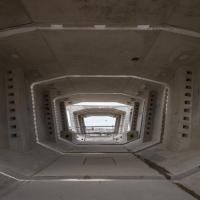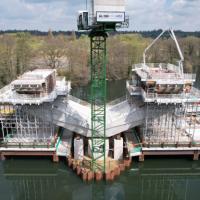Dr Myra Lydon of Queen’s University Belfast has been working on a sensor since last year.

Above: Dr Myra Lydon
The initial prototype senor has been developed in partnership with Somni Solutions and testing has now completed. The project has been funded by UK Research & Innovation’s Impact Acceleration Accounts (IAA) and Invest NI has provided additional funding for market exploration.
Lydon hopes it will be in place on a Northern Ireland bridge this summer and that, after further research, there will be a wider roll out of the sensor.
She explained the significance of the new sensor at Queen’s University Belfast’s ‘Research with Impact’ event, which took place at the Sonic Arts Research Centre. “In 2019 it was estimated that within the UK an average of 8.2 million passenger journeys are lost annually due to the risk of bridge scour, with an associated economic cost of £60 million [US$73.6 million]," she said.
“In 2009, we witnessed catastrophic bridge failure in Malahide, Co Dublin, where scour failure occurred suddenly. With scour, there is often no prior visible sign of distress to structure. In Malahide, the bridge was inspected just weeks prior to its collapse and had passed inspection but then failed seconds after a full passenger train crossed. Thankfully it narrowly avoided the catastrophe.
“It is vital that we protect our bridges and are able to detect scour before incidents like this take place. The sensor that we have developed detects changes in the riverbed prior to the damage occurring on the bridge. This can provide an early warning, which undoubtedly is safer and helps to prevent widespread bridge failures when we are faced with extreme climate events, such as flooding.”
Initial laboratory and field trials have been completed and Lydon is now working with Kris Campbell Head from the Highway Structures Unit in the Northern Ireland Department for Infrastructure to identify a suitable bridge test site. The sensor will be installed along with other structural health monitoring equipment designed to ensure the safety of ageing bridges.




